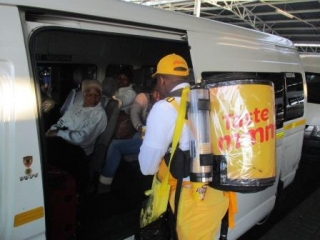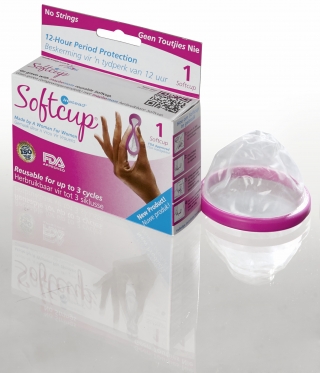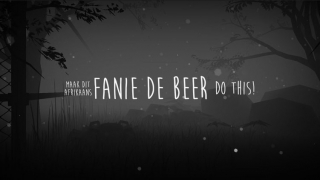Roving main market consumers are driven by experiences
By Miguel Correia, marketing manager of established brand activation, entertainment and event company, the Zinto Marketing Group
South Africa has an extensive public transport system that carries hundreds of thousands of commuters from their residences in ‘eKasi’ (townships) to economic hubs in major cities.
According to the latest statistics published by Arrive Alive, the taxi service industry occupies 65% of the public transport system. A R40-billion a year industry, there are 250 000 minibuses on South Africa’s roads carrying up to 15 million people per day. By comparison, taxi transportation is the most widespread among local commuters relative to the remainder of the sector which is 20% by bus and 15% by rail, which is indicative of the income earning potential of the main market due to high transport costs. After all, the masses spend a large portion of their remuneration on daily transport.
Passengers travel some distance traversing main arterial routes over lengthy periods of time to reach their destinations and regularly they will transfer from one location to the next via several modes of transport.
Because people are investing more time travelling and waiting at taxi ranks, bus stops and train stations, this opens up new communication channels, marketing opportunities and transaction windows for brands. A captive audience, these consumers in transition are constantly are looking for ways to reduce waiting times and eliminate boredom.
Since the main market is driven by experiences and entertainment, these transfer points present an ideal opportunity for experiential marketing to take the stage and to capture the consumers’ direct attention for a longer duration of time than traditional forms of advertising.
This trend offers real value for marketers wanting to reach mass markets and numerous touch points at high traffic intersections simultaneously. Since consumers are more open to being approached in these situations they will embrace a new experience that is engaging whilst waiting for their transport to arrive.
Whether brands are providing product samples, leisure activities or resting places with products/ services that can be consumed/ used while they wait, it allows a wide umbrella of companies to use these areas to communicate messages to a receptive audience and capture the hearts and minds of consumers.
We see an example of this interactive experience in practice on Bree Street in Johannesburg where a well-known coffee brand has placed brand promoters at a bustling node. While waiting in line for their transport to arrive on a cold winter morning, commuters are offered a hot cup of java, handed product samples for trial and consumption as well as promotional leaflets which can be read in-transit.
At the same time, key brand messaging is communicated by way of brand activators through live entertainment platforms. As a result, consumers are given the chance to truly immerse themselves in the brand.
The influence of the senses – sight, sound, scent, taste and touch, on the customer experience is collectively activated in a single interaction and largely impact buyers’ perceptions, judgement and behaviour towards a product or service. This helps consumers to make informed purchasing decisions and is a powerful tool in winning brand loyalty.
Stimuli received from the brand activation environment trigger consumers’ senses and leave a lasting and memorable impression (in this case – respite from the harsh cold), which can break through a plethora of marketing clutter.
These brand encounters also create useful spaces to position a brand positively across the major touch points where consumers can get involved, exchange relevant information and broaden their understanding of the product or service offerings and its benefits.
Experiential marketing activities generate awareness, engage consumers, build brand goodwill, elicit a direct response, and enable potential buyers to absorb content and information in real time.
To further enhance the user journey advertisers can utilise in-transit television commercials or radio inserts to promote the product or service and encourage users to download a brand app or visit digital platforms.
For more information about main market activations visit www.zinto.co.za
Hungry Lion Calls on SA to Help Break World Record
11,000 Pieces of Free Chicken Served on Heritage Day
Cape Town, 9th September, 2014 – As all of South Africa celebrates Heritage Day on 24th September, residents of Cape Town are invited to make history with Hungry Lion by breaking the Guinness World Record for the world’s largest serving of fried chicken.
Over 11,000 pieces weighing over 1.1 tonnes (1,100kg’s) of King Sized chicken will be served from a mega 4 metre high version of the Hungry Lion’s iconic Pride Bucket at the Liberty Promenade Mall in Mitchell’s Plain.
Participants will enjoy the delicious chicken with a free Coca-Cola and will be awarded throughout the day with spot prizes and entertainment provided by Coca-Cola and TopStars AllStars.
“The event is the culmination of our popular ‘Lucky Bucket’ campaign which has seen over 1.5-million digital voucher downloads and has resulted in double-digit sales growth for the brand,” says Tashalene Reid, Brand Marketing Manager at Hungry Lion.
“We have handed out over R6.9-million in prizes since the inception of the campaign and our R100,000 grand prize winner will be announced on the day.” She explains that the purpose of the event is to show how we live up to our brand promise of giving Mzansi MORE, we couldn’t think of a better way than to put smiles on the faces of at least 11,000 people on Heritage Day.
“We chose Cape Town as the destination to break the record because of the generosity of the people of the city but at the same time are ensuring that we give everyone the opportunity to participate by going into any Hungry Lion store and sharing our Heritage Day Feast with the whole family,” Reid adds.
Four years ago the the record was broken by KFC in Kentucky, Louisiana with a weight of 907kg in celebration of their 70th birthday.
The most recent record was broken on the 23rd of September 2011 in Japan by the Qatar Food Company at the Karaage* Festival weighing in at 1,076kg.
Join Hungry Lion in bringing together friends and family throughout Mzansi to celebrate the diversity of our proudly South African heritage.
For more information visit: www.hungrylion.co.za or join the conversation on https://www.facebook.com/hungrylion or Twitter: @HungryLionSA #LuckyBucket #HeritageDayFeast *Karaage is a Japanese fried chicken dish that uses boneless chicken and a potato starch batter. It is becoming increasingly popular in some parts of the Western United States where it is colloquially referred to as 'JFC' (Japanese Fried Chicken).
12 Hour Period Protection, No Strings and No Wings
Woman of today have realized that getting their period every month is, well I guess, just the way life goes. In 1996, Instead, Inc. pioneered a new alternative to tampons and pads with the development and release of its innovative Softcup.
Now in 2014, Maybe MOM is proud to announce that they have made this product tagged ‘The Next Generation of Period Protection' available to the South African market. Maybe MOM Instead Softcup gives you 12-hour wear time, comfort and convenience during your period allowing ladies to live life without interruptions.
Softcup is a flexible cup that is worn internally, around your cervix. It collects, rather than absorbs menstrual flow. It's hypo-allergenic, latex-free and completely safe when used as directed. Softcup has gained popularity for its many advantages over traditional methods of feminine protection including greater safety, longer wear-time, and clean sex during “that time of the month. Softcup can be worn during any activity including sports, swimming and sleeping. Use one reusable Softcup for up to three cycles, which makes it Easy on the Earth and Easy on the wallet retailing in stores for only R49.99.
More than 200 million Softcups have been sold since the product’s introduction in America in 1996, and there has never been a reported incidence of Toxic Shock Syndrome (TSS). In extensive laboratory testing Softcup did not promote the growth of the bacteria that causes TSS. Softcup does not change the body’s natural environment nor does it alter the body’s pH levels, natural bacteria levels or absorb the body’s moisture. “It allows me to use the softcup until the last day of my period, even when my flow may be little to none, it’s comfortable and does not cause dryness or irritation” says Amanda, owner of Maybe MOM South Africa.
“Because the Softcup was uniquely designed for the modern-day woman, it has grown tremendously and developed staying power in the American market, proving an excellent alternative to tampons and pads,” said Joseph Pike, CEO of Instead. Women have embraced the concept of the Softcup because of the greater flexibility and control it gives them over their lives. In fact, when the Softcup is not offered somewhere, women seek it out rather than buy the alternatives.
The Softcup is an FDA-approved, reusable menstrual product made from a non-absorbent, non irritating polymeric material that has been used for over 20 years in health care products such as catheters and baby bottle nipples and contains no latex. It has undergone extensive toxicology, bio-compatibility and microbiological tests as well as human clinical testing, and contains no drying chemicals or fibers.
12-Hour Period Protection, Instead Softcup is a proven advancement in period protection. Try it and you'll see how it fits into your busy life.
For more information and to purchase contact (Wholesale enquiries welcome) Facebook: www.facebook/maybe mom.com / Website: www.aeadistribution.co.za /Your nearest Checkers and Checkers Hyper stores as well as Medi Rite Pharmacy’s For Interviews: Amanda or Elie Kouaiky /Tel: +2783 2928292 / +2782 8881816 / This email address is being protected from spambots. You need JavaScript enabled to view it. / This email address is being protected from spambots. You need JavaScript enabled to view it.
Somerset West’s Own Indie Game Studio
Indie games are fast becoming a trend in South Africa, catching on from the overseas markets. These days, children and adults alike are playing mobile games as never before. People are always hungry for something different, which is where indie games – or ‘independent’ games – come in, providing players with something other than the mass-produced mainstream products.
Now, Somerset West can boast with its very own game studio that started turning its cogs in February this year. For its first month of existence, the studio was run out of the founder’s mother’s basement – typical indie game studio protocol, if history is anything to go by. Now, running from a house close to De Hoop Primary School, the studio focuses on creating mobile games (such as their recently released Afrikaans game, Fanie de Beer) and has oodles of style, creativity, skill and initiative.
While the Apmil Game Studio has only been up and running for a few months, the people who daily put their shoulders to its wheels have been building up relationships for the last three-and-a-half years. Even though the studio officially started up in February, the idea of an indie game studio had been brewing in the mind of Studio Head, Pierre Bezuidenhout, since 2011. Pierre started lecturing in the Animation Department of Cape Town’s City Varsity in 2011 – and this is where he met the three students who would later join him in this grand venture.
Pierre, as leader of the team, is Apmil’s Programmer and Technical Director. He has previously worked in advertising and animation for Wicked Pixels in Woodstock and held the position of lecturer at Concept Interactive as well as at City Varsity. His impressive skill set includes a sharp eye for detail as well as design flair and programming aptitude in different digital languages and platforms – he is also quite the people-person. Altus Barry is the Technical Lead, taking charge of rigs, renders and other related tasks. Mabet van Zijl did her major in 3D Narrative and, as Generalist, leads Apmil’s marketing and writing in between her usual workload. Louren Hattingh takes the roles of Lead Animator and Concept Artist. While each person has their area to lead, the workflow runs with a ‘rock-paper-scissors’-style in which one falls under the delegation of another while dealing with respective area-specific tasks. Sitting around a whiteboard, each armed with a marker, they discuss character design, story line, player motivation, level arrangement, time constraints and load division before jumping in with the actual development.
The first released game, Fanie de Beer, is a 100% physics-driven, full 3D, indie puzzle game with a distinct South African flavour. Playing as Fanie de Beer, a 12-year-old farm-boy, the player utilizes simple little rocks by tapping once on the screen to clear best friend Jaco Kriel’s fields of strategically placed, ancient landmines. Built in Unity, the game takes place in a single day – with the story starting early in the morning and ending in the evening – transporting the player through a dynamic day/night cycle and colourful, saturated farm fields as they progress through the 84 levels, meeting new mine types and increasingly difficult challenges as they go along. Written and designed in Afrikaans, then carefully translated into true farm-style English, this game is unique, fun and proudly South African. The demo is available for download from the Google Play Store, while the full game can be purchased on Samsung Apps and Amazon.
The next game in the pipeline is different from Fanie de Beer in virtually every way. Where Fanie is a very colourful 3D puzzle game with just enough back-story to set the player up for the context and flavour of the game, the current project is a heavily story-driven platform-game that takes place in a fictional world made up of parallaxing silhouettes and strange characters.
Apmil Game Studio has not only been created as a platform to build games, but also as a springboard for fellow animators, developers, designers and illustrators. It’s a breeding ground for collaboration, ideas, innovation and learning. Each person hones their skills while doing fun and challenging work through creating games and stories as well as fulfilling the creative needs of small to medium-sized businesses in the Western Cape and Gauteng.
Apmil Game Studio services include animation, app creation, game creation, rendering/stills, asset creation, video editing and UX. The creative division of Apmil, led by artist Janet Botes and writer Michelle Albinson, offers logo design, graphic design, online/web design, interactive design, writing, editing, proofreading and illustration.
Apmil prides itself on being different: Fresh ideas, innovative applications, strange and wonderful games – they are all things that receive the studio’s love and attention to detail. To find out more or to get involved, contact Pierre Bezuidenhout at This email address is being protected from spambots. You need JavaScript enabled to view it. or call him on 082 499 3133
Studio ingredients:[A]ltus makes the bus and [P]ierre drives the bus; [M]abet takes the bus t[i]ckets and [L]ouren makes the bus move. Thus, [apmil].
Free demo: Google Play – bit.ly/fanie_demo
Full version: Samsung Apps – bit.ly/fanie
Official Trailer: Youtube – bit.ly/fanie_trailer
Apmil page: Apmil/Fanie – apmil.co.za/fanie-de-beer




